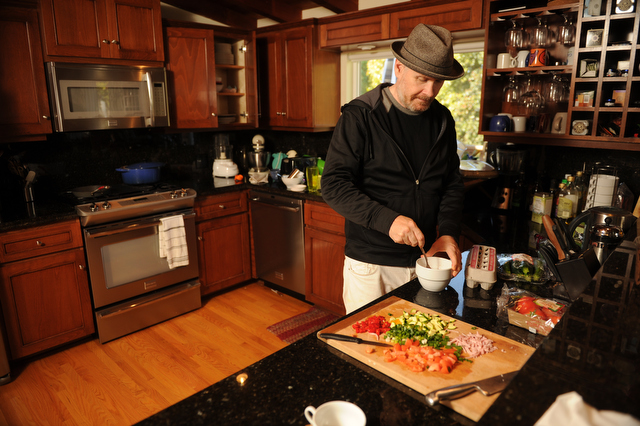Eating on $194 a Month

Two years ago I embarked on a journey into what for me was unknown territory — seeing whether I could survive on Food Stamps for a month. As CEO of an organization that has daily involvement with providing food and nutrition education, could I put my stalk of celery where my mouth was? I learned a lot, but like with most things in life, the lessons began to ebb away with time, and have to be relearned.
What hasn’t ebbed away is the need in the community for both food stamps (called CalFresh in California) and the additional food provided by the Foodbank and its 330-member nonprofit agencies in the county. We were involved in a national study, “Hunger in America,” through our partner organization, Feeding America, and the local data for Santa Barbara County made startling reading. Sixty percent of those we serve are having to choose between food and medicine, and the total numbers served have grown to 140,000.
This made me realize that now was the time to return to see if I could succeed at what we ask thousands of families in our community to do every day of the year: survive on a tiny food budget. More than that, to find a way be healthy while I am doing it. My purpose is not to teach others a lesson, but to teach myself one.
I decided to fast on the first day to get the tiniest taste of what it feels like to be one of the millions of Americans who skip a meal or two, usually so that a loved one can eat instead.
Hunger is invisible in our communities. It is not the just the homeless dude with the “Jokes for Sale” sign; it is the family working two jobs, the senior who has a handful of change to get her to the end of the week, the child who can’t get a nonexistent bus to get to school early enough for a free breakfast.
It was tough to go without food for 37 hours, drinking only water with lemon. My ability to concentrate went out the window. My wife, Mari, was convinced that I would become “hangry” (hungry and angry) and start getting argumentative, so I was determined to focus lots of energy on making sure that didn’t happen. (It didn’t!) I woke up in the night with the feeling that hunger was like a soda can falling deeper and deeper into the water and beginning to scrunch inward from the pressure.
Day Two: I had to decide how much of my monthly allotment of $194 I was going to spend at once. The terrifying truth is that I spent $72.45 of it — nearly half. I went to Trader Joe’s because after a little price comparison, I reckoned that I could buy staple items very cheaply.
I broke my fast this morning with some oatmeal with pecans. I have always hated oatmeal, especially made with water, but I have decided that if my food security challenge is to be successful, I just have to get over those chewing cardboard-flavored wallpaper-paste feelings. The reason is that oatmeal is cheap and nutritious, and it helps stave off hunger pangs. After 36 hours without food, it tasted pretty good. We’ll have to see how long I can keep it up.
You can follow my food security challenge here on this blog and on all of Foodbank of Santa Barbara County’s social media networks (Facebook, Twitter, Instagram and my Twitter, @Hunger2Health). During the four weeks, I will be reporting on what can often be an invisible world. I will be finding out how I can grow some of my own food, how Foodbank programs are addressing health issues such as diabetes head on, and what we can all do to make this situation better for our friends and neighbors in our community.



